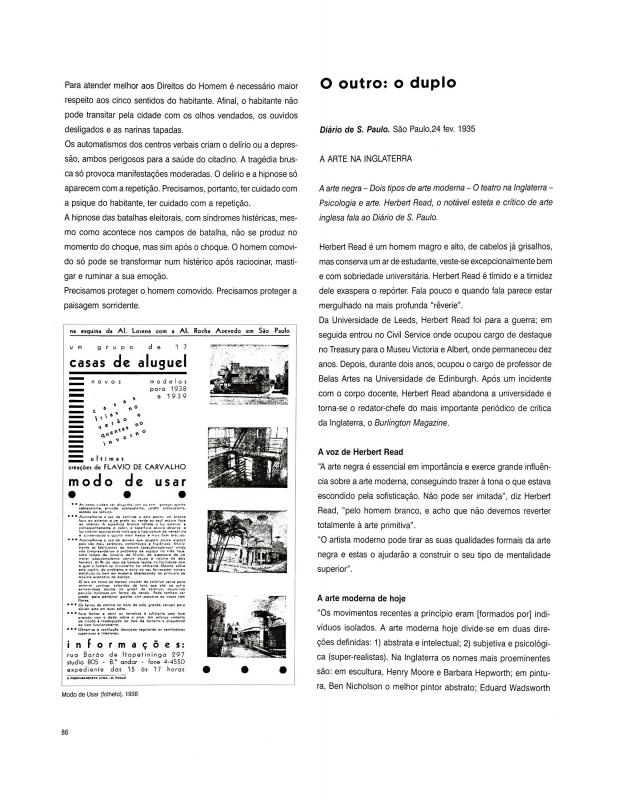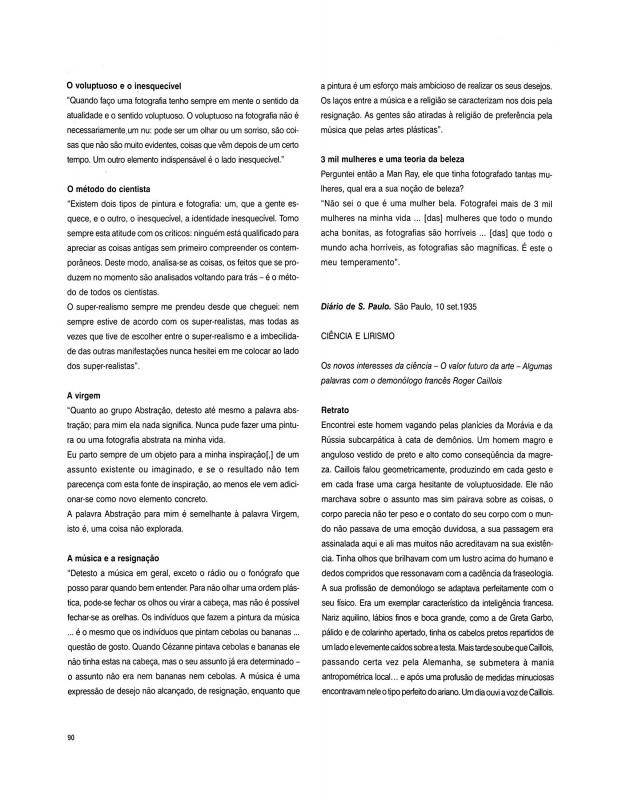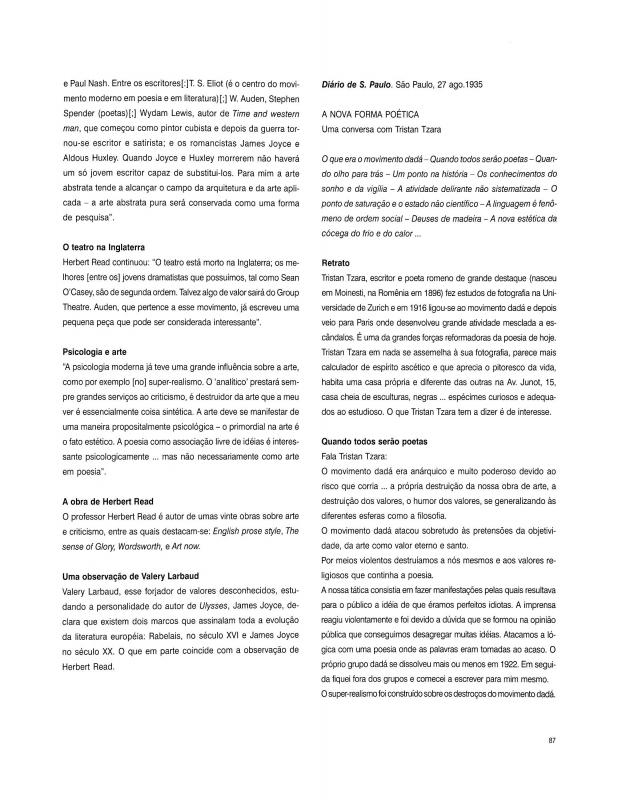This document is one of a series of interviews conducted by the architect and artist Flávio de Carvalho (1899–1973) during one of his trips to Europe—in this case in 1934—when he recorded his conversations with artists of the stature of the Dadaist poet Tristan Tzara, the critics Herbert Head and Roger Callois, the theoretician of Italian futurism Filippo Tommaso Marinetti, and Man Ray who, like it or not, claimed to be a Surrealist. The following year, Carvalho published his records of those conversations in the newspaper Diário de S. Paulo.
Flávio de Carvalho studied in France (Paris, 1911–1914) and then, after the First World War, in England (Newcastle-upon-Tyne, 1922). In Brazil, where at the time most artists were focused on Figurative or nationalist ideas, he became one of the few artists to be associated with Dadaism and Surrealism. In addition to his painting, he was known for his rebellious actions, such as his Experiência no. 2, in 1930, when he wore a flamboyant hat and paraded in the opposite direction to a Catholic procession in São Paulo. By destabilizing the prevailing social and moral order, his goal was to research the general public’s psychological reaction and behavior in extreme situations. His interview with Man Ray was a typical example of Flávio de Carvalho’s role in Brazilian society, and reflected his desire to challenge the country’s cultural provincialism.
In reference to this matter, see by Flávio de Carvalho, “A arte na Inglaterra”, Diário de S. Paulo, São Paulo, February 24, 1935 [doc. no. 1110385]; “Ciência e lirismo”, Diário de S. Paulo, São Paulo, September 10, 1935 [doc. no. 1110390]; “A nova forma poética. Uma conversa com Tristan Tzara”, Diário de S. Paulo, São Paulo, August 27, 1935 [doc. no.1110387]; and “Surrealismo”, Cultura, São Paulo, February-March, 1939.



